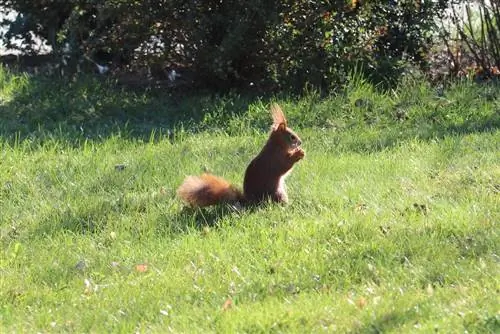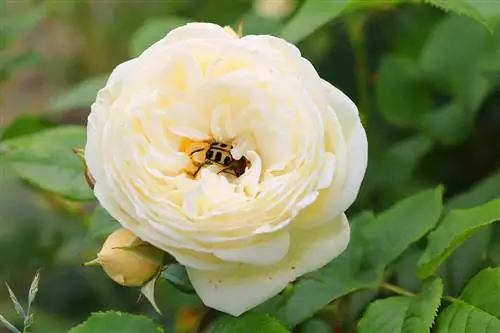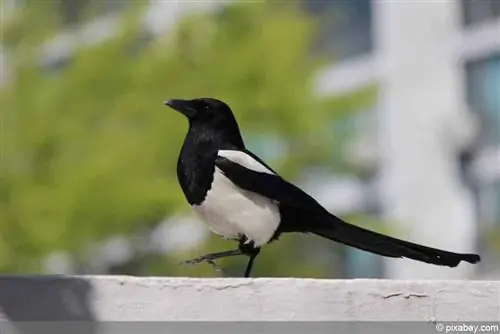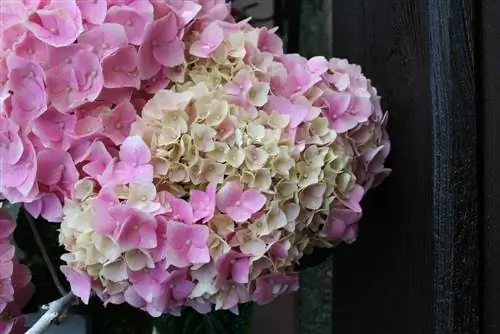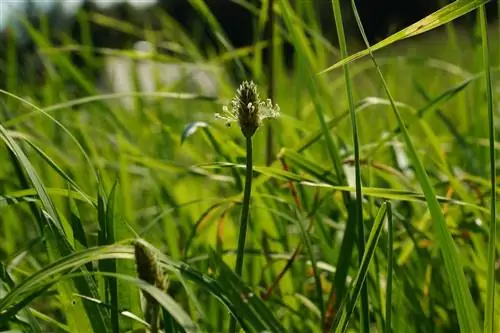- Author admin [email protected].
- Public 2023-12-17 03:39.
- Last modified 2025-01-24 12:45.
Lots of animals roam around the garden and leave their droppings behind. If pests are involved, then there is an acute need for action for he alth reasons. In contrast, squirrel droppings are viewed as rather harmless.
Squirrel
The squirrel has the botanical name Sciurus vulgaris and is also called squirrel in some regions. The animals are typical cultural followers of humans and do not shy away from visits to local gardens. They prefer trees as a habitat and are always looking for food. Unlike rats, squirrels are not usually viewed as pests, but rather as cute little animals. In most cases, rodents do not cause any damage to the garden. Sometimes it can even happen that over time the little rodents completely lose their shyness and even venture up to the balcony. Of course, it can happen that the animal leaves behind its droppings on its path. However, due to its small size, this is not a problem for most people.
- Squirrels are small and agile climbers
- Fur color from red to dark brown
- Fur is usually darker at high altitudes and in winter
- Abdominal region is always white
- Wears distinctive ear brushes from fall to spring
- Long and bushy tail
- Belongs to the rodents
- Travels a long way in search of food
- Leaves traces of poop practically everywhere
Squirrel poop
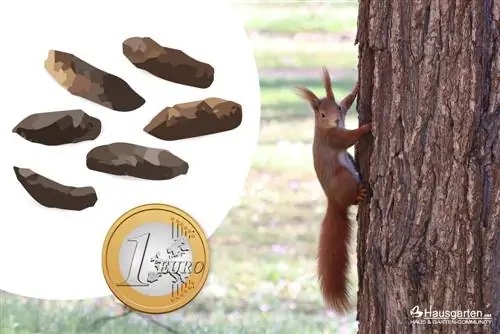
The medical term for animal excrement is solution or feces. Compared to other animals, squirrel droppings are generally not dangerous. In contrast, rat feces are extremely harmful to he alth. In size and shape, squirrel droppings look similar to hedgehog droppings, but they are shiny black. The consistency of squirrel droppings is significantly firmer than that of many other animals in the garden. However, this aspect depends on the rodents' eating habits. The animals usually eat mostly nuts and seeds. However, squirrels also eat fruits and other parts of plants as well as eggs, mushrooms and small animals. If these foods predominate, the consistency of the feces also changes. There are also residues in the feces because squirrels do not fully digest their food.
- Consists of multiple and separate pieces
- Small and cylinder format
- About 2 to 3 centimeters long
- Structure is more dry than moist
- Features can be seen with the naked eye
- There are often clearly visible residues in the feces
- This includes flower buds, nut pieces, mushrooms and seeds
Tip:
To examine the texture more closely, the feces can be tested with a wooden stick and maneuvered for a better view.
Color & Smell
Other identifying features of squirrel droppings include color and smell. However, slight variations in coloring are possible, depending on the specific dietary habits of the rodents. Regardless, the color aspects of the feces can only be an initial indicator, as many other wild animals also deposit feces of the same color. There is therefore always a risk of confusion with these instructions. In addition, squirrel droppings cannot be identified by smell. In contrast to some pests, squirrels do not mark their territory with urine, such as rats, whose excrement smells very bad of ammonia. In general, squirrels roam around the garden at any time of the year. The rodents do hibernate, but not as intensively as hedgehogs, which sleep through the entire winter. Therefore, there is no risk of confusion with hedgehog droppings in winter.
- Feces are usually dark brown
- Almost black in some cases
- Does not give off any noticeable smell
- Doesn’t bother you thanks to the lack of smells
- Squirrels are more or less active all year round
- Working hard all day in summer
- Leave the winter quarters regularly for short periods of time
- Then look for hiding places with food
- That's why there's no time off from her poop
Note:
The lack of smell in the feces is probably due to the rodents' predominantly plant-based diet.
Examine and dispose of feces
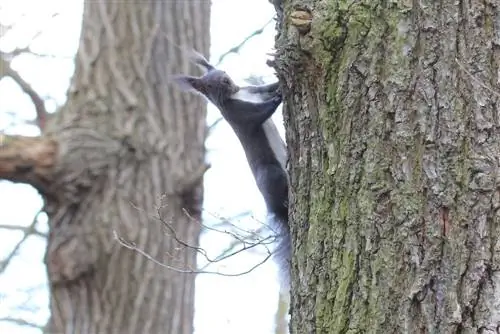
If you want to examine squirrel droppings, you should always observe them from a distance. Since pieces of faeces from wild animals often contain parasites that can cause illness, a safe distance must always be ensured. Since most people are not familiar with the solution of animals, an expert in this area can help out, for example a gardener, forestry officer, zoo employee or pest controller. In this way, any risk of confusion can be eliminated and the pieces of droppings found can be identified with certainty as squirrel droppings. It is important that the feces do not come predominantly from rats, as these pests pose a threat to human he alth. If there are a lot of pieces of droppings lying around in the garden, there is a high risk that users will accidentally step on them at some point. In addition, small children generally put everything in their mouths, just like pets.
- Never touch feces with your bare hands
- Take some photos, especially close-up ones
- Then compare with photos on the internet
- Getting rid of feces after the examination
- Never touch the feces directly
- Be sure to use disposable gloves
- Then dispose of in the trash together with the feces
- To do this, put pieces of feces in a bag and close it tightly
If you want to know the exact origin of pieces of feces in the garden, you can send the animal feces in for analysis. However, this examination is associated with costs.

